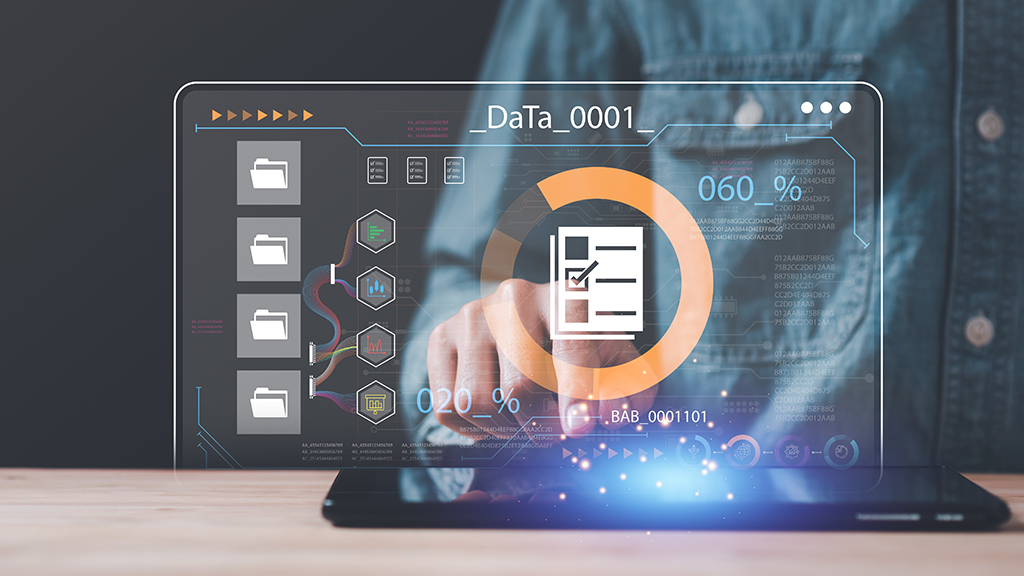
Data & AI Evangelist

Principal Data Architect
Subscribe to the newsletter
Turning data into reports, insights, and interactive visualizations for data analysis is no longer a complex process. With Power BI, this process has become not only efficient but also dynamic and insightful. With its intuitive interface and remarkable capabilities, especially when integrated with Microsoft Fabric, Power BI empowers technical and non-technical users to explore data, uncover trends, and make informed decisions.
Currently, over 62,000 companies worldwide are using Power BI, empowering users to visualize and analyze data in meaningful ways. The interactive and visually compelling reports and dashboards it creates using various data sources facilitate faster decision-making across the entire organization with just a few clicks.
If you’re already using Power BI but haven’t explored Microsoft Fabric, an end-to-end analytics platform, you may be missing out on its full potential. Fabric seamlessly integrates Azure Data Factory, Azure Synapse Analytics, and Power BI into one cohesive product, delivering a lake-centric SaaS solution. Additionally, by leveraging Microsoft Fabric’s integration with Power BI, you can enhance the platform’s capabilities, unlocking better performance and scalability for advanced analytics and visualization.
In this blog, we will explain the role of Power BI in Microsoft Fabric and explore how its robust data and AI capabilities improve the Power BI experience.
What is Power BI?
Microsoft Power BI combines software services, applications, and connectors to transform your data into stunning and interactive visualizations. Power BI allows users to easily connect, visualize, analyze, and share valuable insights with anyone, whether your data resides in an Excel spreadsheet or across various cloud-based and on-premises hybrid data warehouses. This fosters data-backed decision-making across the organization. Moreover, the Power BI dashboard feature allows for data reporting and visualization in many styles, including maps, charts, graphs, scatter plots, and numerous other formats.
Learn more: What is Power BI used for, and how can it benefit your business?
The fundamental components of Power BI
The Power BI includes several key components that work together to assist businesses with data analysis and reporting concerns. These include:
Power BI Desktop
Power BI Desktop is an integrated development tool for Power Query, Power Pivot, and Power View. With Power BI desktop, users can create interactive reports with data modeling tools. Also, Power BI Desktop supports installation only on Windows machines.
Power BI service
Power BI is a software-as-a-service (SaaS) or cloud-based service that supports dashboard creation, app creation and sharing, and data analysis and exploration to uncover valuable business insights. Moreover, it also allows reports to be published and shared with teams and organizations.
Power BI mobile apps
Power BI mobile apps are mobile applications for Windows, iOS, and Android devices. With mobile apps, users can interact and connect with their cloud and on-premises data. Mobile apps’ responsive and user-friendly interface allows mobile data exploration, sharing, and collaboration.
Power BI report builder
The Power BI report builder creates paginated reports in the Power BI service. These reports are called paginated due to their formatting, which ensures they fit neatly onto a single page. These reports are commonly utilized for operational purposes or to generate printable forms such as invoices or transcripts.
Power BI report server
Power BI report server is an on-premises report server that allows users to publish their Power BI reports after creating them on Power BI Desktop. It has the unique capability to deploy and use mobile reports, paginated reports, and KPIs.
Continue reading: How to use Microsoft Power BI for business intelligence?
Match your role with Power BI compatibility
Your role within a project or team influences your approach to utilizing Microsoft Power BI. Individuals with diverse roles may employ Power BI in Microsoft Fabric in distinct ways to cater to their specific responsibilities and objectives. Moreover, it also depends on identifying which feature or service within Power BI serves as the most effective tool for your specific needs.
For instance, you can generate reports specifically designed for your team with Power BI Desktop. These reports present insights into customer engagement statistics. Moreover, through the Power BI service, you can monitor inventory levels and manufacturing progress via a live dashboard. Also, you can produce paginated reports like mailable invoices utilizing the Power BI semantic model. The versatile nature of Power BI, with its diverse functionalities, makes it an indispensable tool to meet your specific needs.
Let’s explore how Power BI is adapted to meet the needs of various roles.
Power BI for sales
A sales dashboard in Power BI provides a visual representative of sales data to analyze and monitor sales performance. It allows users to analyze key metrics, uncover trends, and make data-driven decisions to enhance business outcomes.
Power BI for business users
Business users employ Power BI to visualize and analyze data through easy-to-use dashboards, interactive reports, and compelling visualizations for analysis, monitoring, exploration, and decision-making.
Power BI for report creators
A report creator creates reports using Power BI Desktop or Power BI Report Builder and publishes them to the Power BI service, where users can view them.
Power BI for developers
Power BI developers can create visualizations such as charts, graphs, tables, and maps to represent data in an actionable format. They may use Power BI APIs to push data into semantic models or to integrate dashboards and reports into their custom applications.
An insight into the Power BI experience in Microsoft Fabric
Microsoft Fabric provides a unified platform that merges data (OneLake data store) and services (Power BI), enabling effortless analysis and analytics across a multitude of datasets.
Wondering what your Power BI experience in Microsoft Fabric will look like? Microsoft Fabric will oversee the administration of Power BI, ensuring smooth operations. However, tools like Power BI Desktop and Power BI Service will continue to function as usual. With Power BI in Fabric, you can transform your data -whether it’s stored in OneDrive or Excel – into impactful business intelligence insights.
Moreover, with Microsoft Fabric’s exciting new capabilities, the Power BI experience continues to enhance and simplify the data analytics journey. Let’s explore the features that make Power BI’s experience better within Microsoft Fabric:
1. Direct Lake mode
Power BI semantic models can now utilize Direct Lake mode alongside Synapse Data Warehouses within Microsoft Fabric. Previously, Direct Lake mode was restricted to semantic models on Fabric Lakehouses, while warehouses were exclusively queried using DirectQuery mode. Now, Direct Lake mode also supports warehouses within Fabric.
Direct Lake mode represents an innovative data access technology for semantic models. It enables the direct loading of Delta-Parquet files from OneLake without the need for data import or duplication. By combining the benefits of import and DirectQuery modes, Direct Lake delivers exceptionally fast query performance without any data movement.
2. Copilot in Power BI
With Copilot in Power BI, users can generate more value from their data. They can can describe the visuals and insights they need. Also, users can quickly create and customize reports, refine DAX calculations, create narrative summaries, and ask data-related questions using conversational language. Additionally, Power BI enables users to easily adjust the tone, scope, and style of narratives, seamlessly integrating them within reports. This feature ensures that straightforward text summaries communicate data insights more effectively.
By leveraging Copilot, users can carry out complex calculations, utilize statistical functions, and identify outliers or patterns within their data. Moreover, integrating Copilot into the workflow empowers users to enhance their data analysis and presentation capabilities. This results in significant time and resource savings.
Read more: Explore the unique capabilities of Copliot in Micorosft Fabric
3. Git integration for Power BI datasets and reports
With Git integration, Power BI users can now connect their workspace to Azure DevOps repositories. This allows for effortless tracking of changes, reverting to previous versions, and merging updates from multiple team members. This allows efficient collaboration among team members and facilitates seamless integration with CI/CD pipelines.
Through Git integration and deployment pipelines, users can efficiently manage the entire lifecycle of their work, from development to deployment. Users accomplish this by seamlessly developing through Git integration and deploying their Power BI content across various workspaces, including dev, test, and production. Developers have the flexibility to choose between the user interface (UI) experience or automate the process using alternative tools such as Azure Pipelines.
4. Dataflows Gen2
Power Query within a Dataflow (Gen2) in Fabric offers a means to load data into a Lakehouse, like the conventional method of loading data into a Power BI dataset. Notably, the latest dataflows allow for data appending alongside overwriting during each execution cycle. However, dataflows represent just one avenue for data ingestion into the Lakehouse; an array of additional tools, such as data pipelines and Spark jobs, are now available for this purpose.
5. Data engineering
The integration of data factory pipelines, Spark jobs, and notebooks within Microsoft Fabric facilitates collaboration among users. It enables them to ingest and transform data within a warehouse or Lakehouse. Power Query cannot alone delete a subset of data from a dataset; these additional tools broaden the spectrum of available options.
Consequently, users are empowered to effect updates to data in the Lakehouse, which are promptly reflected in the associated Power BI dataset(s) through Direct Lake mode. Combining various tools and allowing developers to leverage their preferred platforms simplifies the process of preparing data in the desired format.
6. Web data modeling
This development provides a solution for individuals longing for Power BI Desktop compatibility on Mac operating systems. Now, users can develop complete semantic models and report directly on the web without needing the Desktop version. However, this doesn’t mean Power BI Desktop won’t continue to improve. Updates are on the horizon, including new features like calculation groups, an integrated DAX query view, and Copilot for DAX, as revealed at Microsoft Build.
7. End-to-end Fabric governance
The process of creating analytics solutions presents a significant challenge. Data teams oversee numerous elements, ranging from user roles to data ingestion, security, compliance, collaboration, and workspaces. Fabric simplifies this complexity by integrating Power BI, Synapse, and Data Factory into a unified SaaS platform. This integration enables data teams to collaborate within a single workspace, utilizing a unified dataset and accessing centralized administration, governance, and compliance tools.
Moreover, the OneLake Data Hub enables all members of the organization to centrally discover and explore data available to their business domain. This empowers them to take additional actions or expand upon existing initiatives initiated by others.
Accessing Microsoft Fabric if you are already a Power BI user
If you’re already a Power BI user, you don’t need to migrate to Fabric. You can continue to access the same functionalities and capabilities without any disruption.
Power BI Premium users simply have to activate the Fabric tenant setting via the Power BI admin portal to start using the extended capabilities.
Transform your Business Intelligence game with Microsoft Fabric
Power BI in Microsoft Fabric ushers in a new era of data analysis characterized by collaboration, accessibility, and insight-driven decision-making. Business users can transform their analytics workflows by leveraging advanced capabilities, empowering stakeholders with actionable data insights.
With Confiz’s expertise, navigate this transformative journey seamlessly. As a distinguished Microsoft Solutions Partner, our team of specialized consultants is ready to accelerate your adoption of Microsoft Fabric. Whether you aim to enhance analytics processes or unlock Power BI and Fabric’s potential for intelligent insights, we guide you at every step.
Contact us at marketing@confiz.com to benefit from Microsoft Fabric’s data analytics capabilities and maximize your Power BI investment today.



